Nestled within the hive's secrets, discover the intriguing process of how queen bees are born, a complex dance of nature, genetics, and bee behavior.
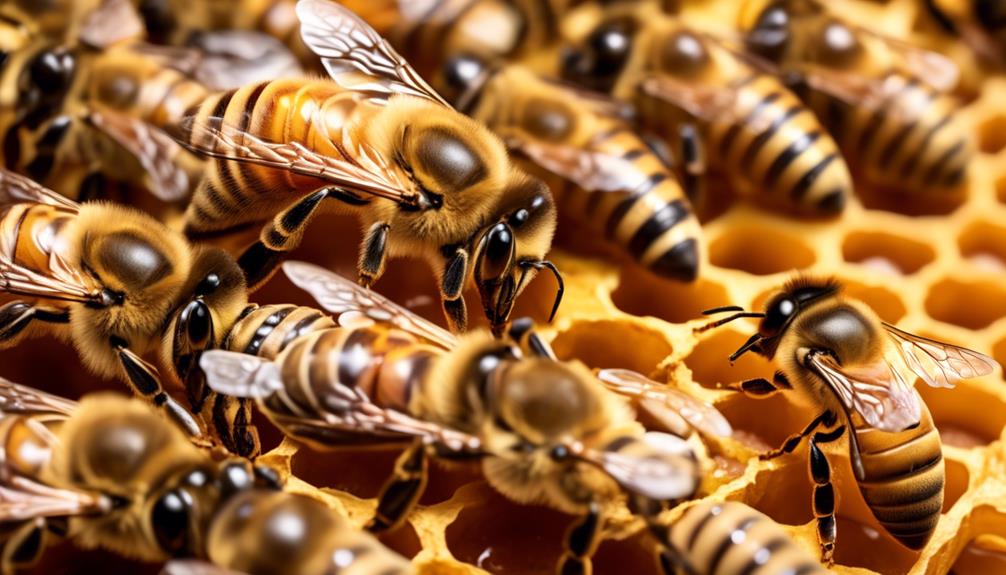
Do Queen Bees Give Birth to Queen Bees?
You may not be aware, but the process of a queen bee's birth is a fascinatingly complex dance of nature. It's not as simple as one queen giving birth to another, as it involves an intricate interplay of genetics, environmental factors, and bee behavior.
The worker bees, not the reigning queen, actually play a pivotal role in the creation of a new queen. But how do they accomplish this? And what determines whether a bee becomes a worker or a queen?
Let's dig into the hive's secrets to unravel these mysteries further.
Key Takeaways
- Queen bees are the only bees in the hive that can give birth to other queen bees.
- Queen bees mate with drones to store sperm for fertilizing their eggs.
- Worker bees play a crucial role in selecting potential queen bees and feeding them royal jelly for their development.
- The birth of a new queen bee is influenced by factors such as the health and age of the reigning queen, colony population, and environmental conditions.
Understanding Bee Reproduction
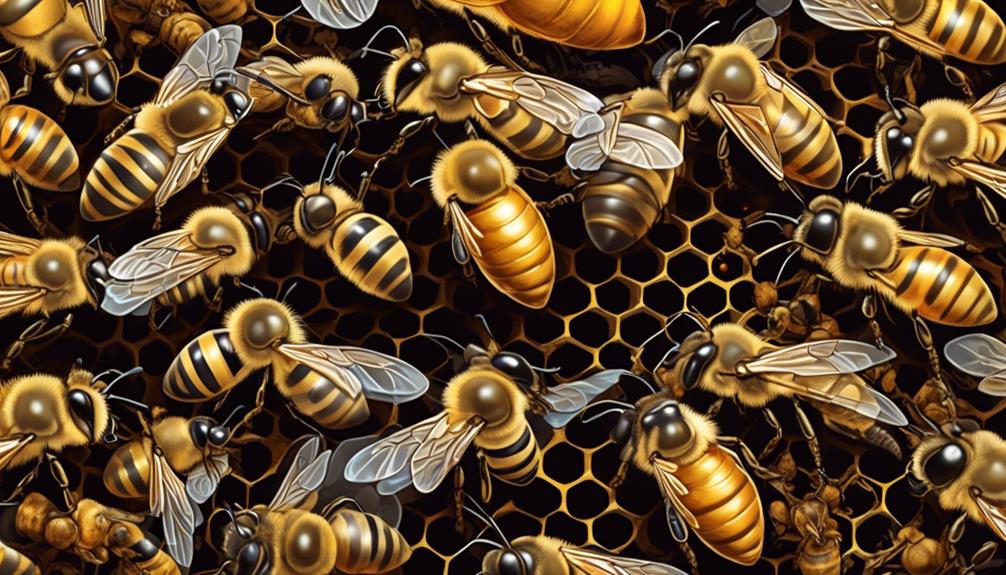
To truly grasp the unique process of bee reproduction, you'll need to delve into the complex world of queen bees, drones, and workers, each playing their own vital role in the continuation of the hive.
The queen bee is the mother of the entire colony and her primary role is to reproduce. She mates with drones, the male bees, in a spectacular mid-air coupling which results in the queen storing millions of sperm to fertilize her eggs.
Now, let's move onto the drones. They're the only male bees in the hive and their sole purpose is to mate with the queen. After fulfilling this role, they die, as their reproductive organs are ripped from their bodies post-mating.
Then, there are the worker bees. All females, they're unable to reproduce but they're integral to the hive's survival. They carry out essential tasks like cleaning, feeding the young, and gathering nectar.
The process of bee reproduction is a marvel of nature, a complex dance of roles and responsibilities that ensures the survival of the hive. It's a fascinating topic and one that's full of surprises.
Lifecycle of a Queen Bee
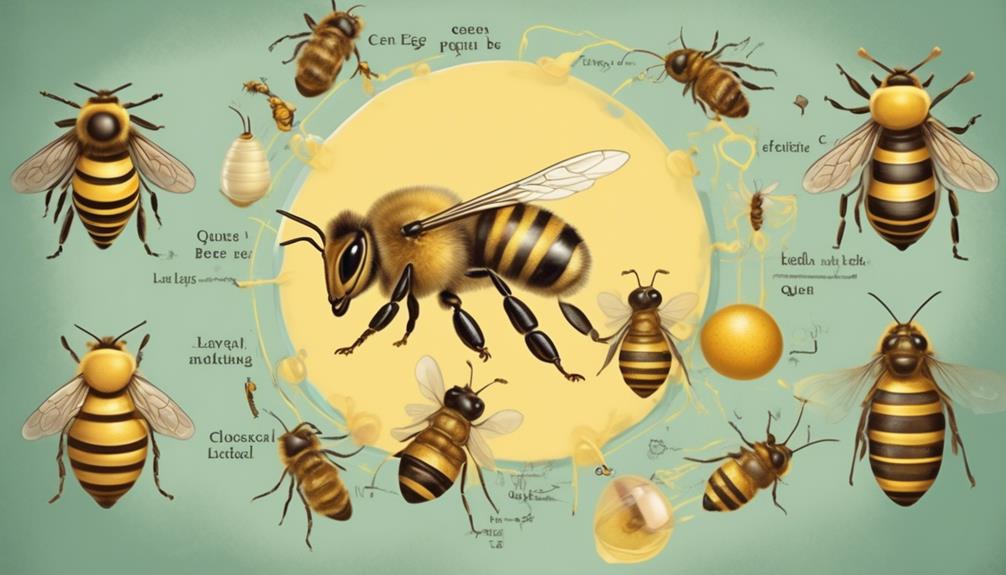
Delving into the lifecycle of a queen bee, you'll find it's a fascinating journey that begins when a worker bee lays an egg in a specially prepared cell within the hive. This cell, known as a queen cell, is larger than the others and is vertically oriented. This egg is then fed with royal jelly, a substance rich in vitamins and proteins, that triggers the development into a queen bee.
After three days, the egg hatches into a larva. In the next stage, the larva grows exponentially, molting several times before the cell is capped by worker bees. Sealed inside, the larva spins a cocoon around itself and begins its transformation into a pupa.
In the pupal stage, the queen's signature characteristics—such as her elongated abdomen and stinger—develop. After approximately 16 days, the mature queen chews her way out of the cell. She's not yet complete, though. She must first undergo a mating flight, where she'll mate with up to 20 drones. Once successfully mated, she'll return to the hive and begin her reign, laying up to 2,000 eggs per day.
This is the lifecycle of a queen bee—meticulous, intriguing, and vital for the survival of the hive.
Role of Drone Bees in Procreation
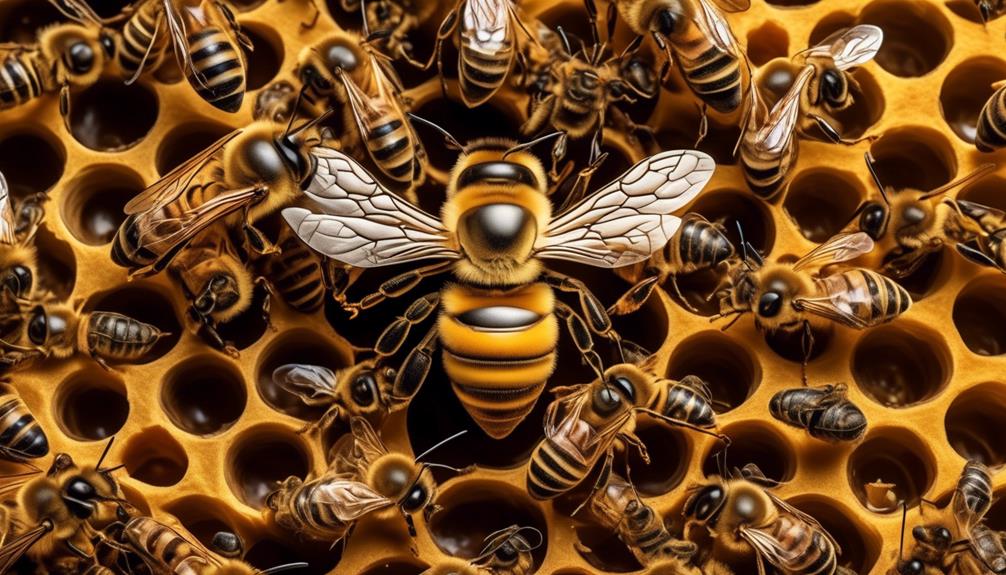
In the intricate world of bee procreation, drone bees play a pivotal role, specifically tasked with mating with the queen to ensure the propagation of the hive. You see, unlike worker bees that are born from fertilized eggs and become sterile females, drone bees hatch from unfertilized eggs and are the hive's only males. They don't have stingers, nor do they gather nectar or pollen. Their primary function is to mate with the queen.
When a virgin queen bee takes her nuptial flight, she attracts a swarm of eager drones with her pheromones. The strongest, fastest drone will mate with the queen in flight, a process that proves fatal for the drone as he dies shortly after. However, his genetic material is now stored within the queen, ready for use in fertilizing future eggs.
It's a brief, but crucial existence for the drone bee. His life's purpose is to ensure the continuity and genetic diversity of the hive. After mating season, drones usually get expelled from the hive as they've fulfilled their roles. It's a tough life, but a necessary one for the survival of the bee colony.
Queen Bee Ascension Process
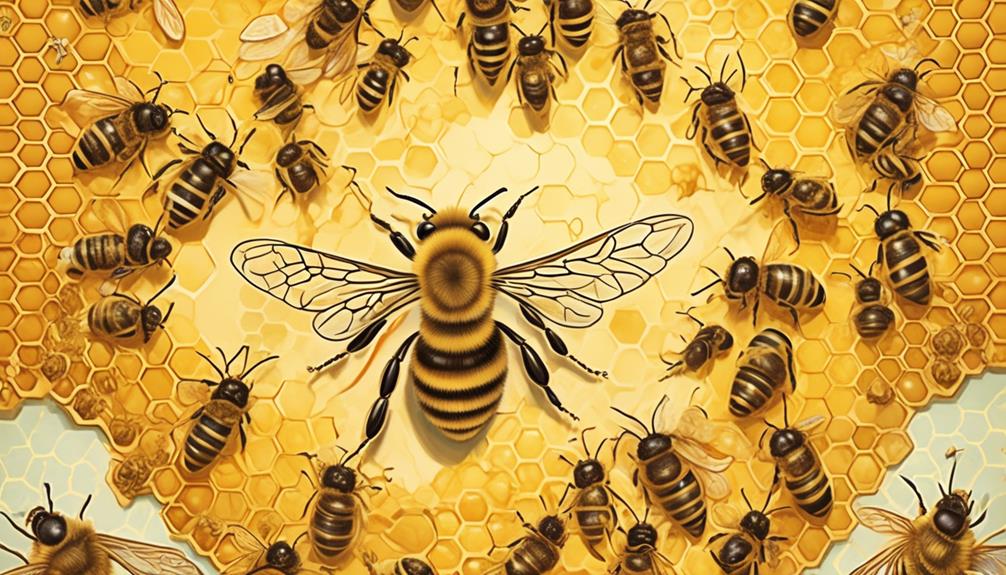
While the drone bee's primary role is to mate with the queen, it's the queen bee's ascension process that ensures the continuation of the monarchy within the hive. This process is a fascinating display of natural selection and genetic superiority.
When the reigning queen bee dies or becomes less productive, it's time for a new queen to ascend. Worker bees select several young larvae and feed them a special substance called royal jelly. Unlike regular bee larvae, these potential queens consume royal jelly throughout their developmental stages, leading to their transformation into queen bees. This process, known as 'royal feeding', triggers a set of genetic changes that result in a fully developed queen bee.
Once developed, the virgin queens engage in a deadly ritual: a fight to the death. The surviving queen then embarks on a mating flight, copulating with several drones in mid-air. Post-mating, she returns to the hive, now full of fertilized eggs ready to be laid.
This marks the end of the ascension process, and the start of the new queen's reign. Through this intricate process, the bee colony ensures its survival and continuity.
Factors Influencing Queen Bee Birth
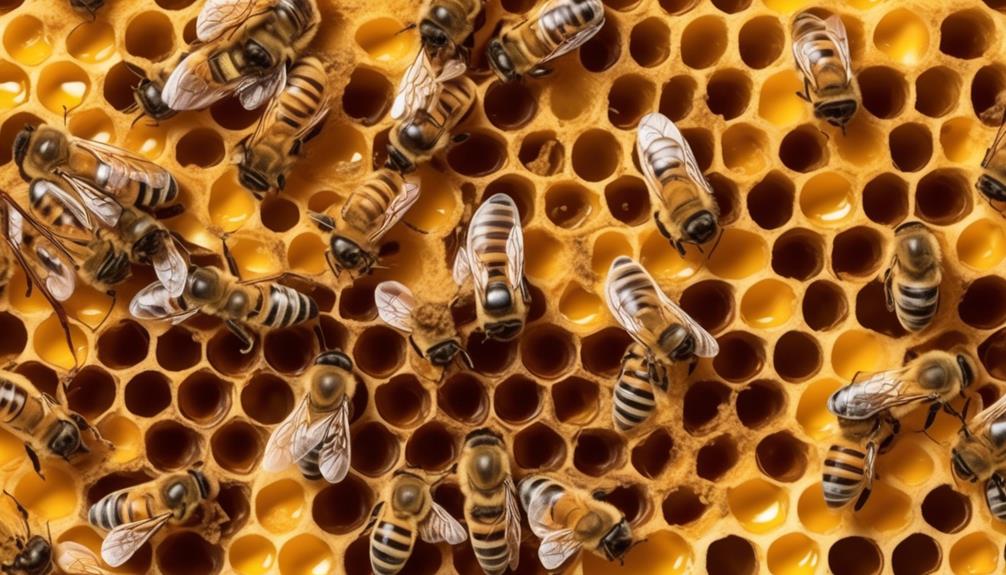
Numerous factors come into play when it's time for a new queen bee to be born, and understanding these can provide insight into the fascinating world of bee colonies. The most crucial element is the presence of royal jelly, a protein-rich secretion from worker bees. You'll find that only larvae fed with this substance develop into queens, a testament to its transformative properties.
But it's not just nutrition that matters. Timing plays a significant role too. The queen bee's age, health, and the colony's wellbeing also factor in. If the queen is aging or ill, worker bees might initiate the rearing of a new queen. Likewise, if the colony's population grows too large for one queen to manage, a second queen may be born to swarm and establish a new colony.
Moreover, environmental conditions also have a say. Suitable weather and abundant food supply are conducive to the birth of a new queen. Thus, it's a complex interplay of internal colony dynamics, external environmental factors, and specific nutritional requirements that decide when and how a new queen bee is born.
Frequently Asked Questions
What Is the Average Lifespan of a Queen Bee?
You're curious about the average lifespan of a queen bee, aren't you?
Well, a queen bee's lifespan is significantly longer than worker bees'. In an ideal environment, a queen bee can live for three to five years. However, it's more common for them to live about two years.
This is because beekeepers often replace queens to maintain peak productivity. So, while they can live longer, most don't reach their maximum lifespan.
How Do Bees Communicate Within the Hive?
Bees communicate within the hive using a complex language of dances and pheromones. When a worker bee discovers a new food source, it'll do a 'waggle dance' to share the location with its hive mates.
Sound, touch, and scent also play crucial roles in bee communication. They use pheromones to send various messages, like warning of danger or signaling the need for more food.
Are There Any Specific Threats or Predators to Queen Bees?
Yes, queen bees face several threats and predators. Some natural predators include birds, spiders, and other insects. However, the most significant threat to queen bees is human activity.
Pesticides can harm or kill queen bees, and habitat loss due to urban development also poses a danger. You must also consider diseases and parasites, such as the Varroa mite, which can seriously impact the health and longevity of a queen bee.
How Does Climate Change Affect the Lifecycle of a Queen Bee?
Climate change can significantly impact a queen bee's lifecycle. Warmer temperatures can disrupt their breeding patterns, leading to premature or delayed mating flights. Prolonged hot spells may also affect their food supply, causing nutritional stress. It's like your food sources disappearing because of unpredictable weather.
Furthermore, climate change can enhance the spread of diseases and parasites, putting the queen bee's health at risk. So, it's a multi-faceted threat that you can't ignore.
How Does the Bee Colony React if the Queen Bee Dies?
When a queen bee dies, the colony doesn't just carry on. They react immediately by starting to raise a new queen.
Worker bees select a few young larvae and feed them royal jelly, causing them to develop into queens.
It's a race against time, though. Without a queen's pheromones, the hive can quickly descend into chaos, with workers starting to lay unfertilized eggs, resulting in too many drones and the colony's eventual collapse.
Conclusion
You've seen how queen bees don't exactly give birth to other queens. Instead, it's a fascinating mix of drone contribution, special nourishment, and a fight for supremacy.
Various factors, including colony needs and bee genetics, influence this process. Indeed, bee procreation is a complex, highly regulated process intricately tied to the survival of the hive.
This bee world isn't some monarchy, but a science marvel, demonstrating nature's remarkable efficiency and strategic design.



